The Star Matrix © is an assessment system based on research and understanding that there is more than one path to dependency on mood altering substances and therefore more than one way to conceptualize the problem.
There are multiple components that affect the most important question in all substance abuse disorders. That question is “why?”. Why would a person continue to ingest mood altering substances despite severe negative consequences or the threat of negative consequences? An assessment should answer that question considering all the possible factors that may be involved. There are five major domains that research has identified as factors in the multi- factorial etiology of substance use disorders that are commonly called alcoholism and addiction. They are:
Genetic Predisposition and Biology
Dependency including Frequency and Duration and type of use of the substance
Co- Existing mental health issues and past traumas
Consequences both from Substance Use, Mental Health and Traumas in life
Physical factors; including all other Disorders, Physical Pain, Diseases, etc
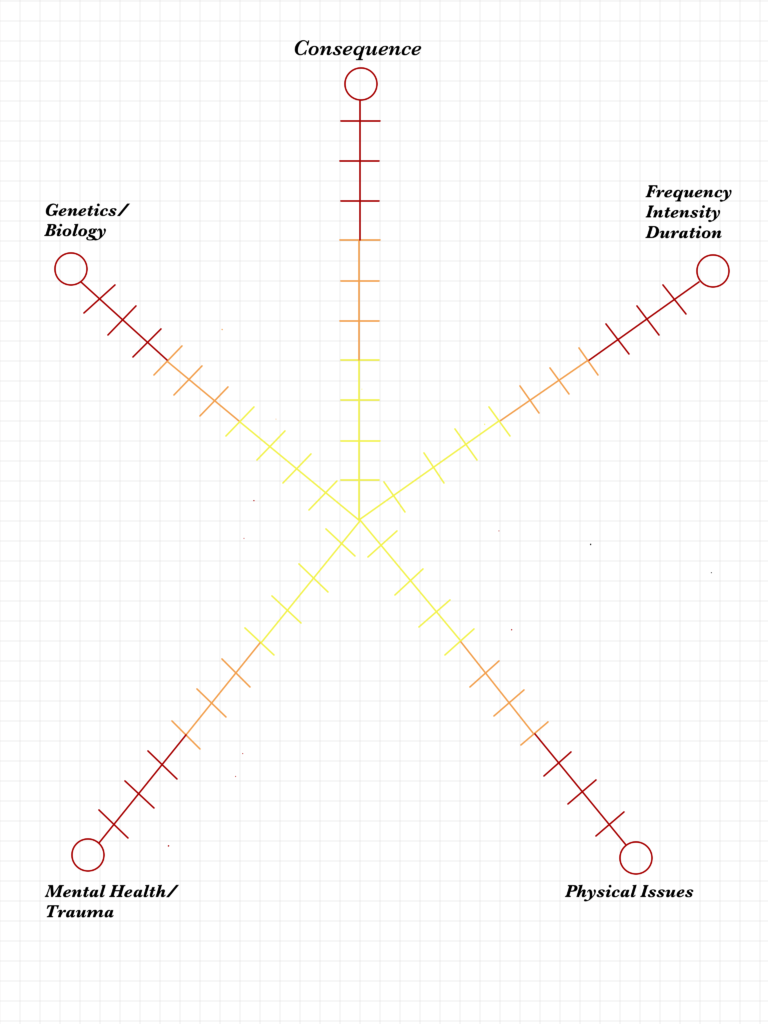
The Star Matrix Assessment System © considers all of these five domains and their relation and weight to one another for a more detailed and nuanced picture of the whole person’s substance use disorder. The system utilizes both objective and subjective weights as the measure of each area.
Why It Matters
Our questions are too narrow. Is the person addict or alcoholic? Do they have a Substance Use Disorder? These questions miss the ways that each person is unique. Just saying a person is alcoholic or addict does little to help us to understand what kind of Substance Disorder. For too long, a diagnosis of alcoholism, addiction and now Substance Use Disorder (SUDs) has led to a cookie cutter approach to treatment planning without problem solving.
Unfortunately, sometimes this approach is not only unhelpful but can cause harm. For example, when a woman with sexual trauma is sent into unsupervised support meetings with men who are wounded also much harm can happen. Or a person who has worked the steps and called their sponsor but has had multiple attempts using Alcoholics Anonymous and then told try again harder creates a sense a hopelessness and despair that some never recover from. With the Star Matrix © System there is a way to look at these factors and more to determine a plan with support and accountability that will work for that individual person. At the Intensive we look at the whole person and work with that individual to assess and come up with their individual plan. There are some similarities, cravings, obsessions about use, euphoria that are common but the way and manner these issues manifest are individual. Most people get better, it just doesn’t happen the way we think it should.
Case Examples
Connie is an attractive 66-year-old woman from the suburbs. She drank normally most of her life until her children grew up and left home. At 50 she started drinking to excess. Since then, she has gotten multiple DUIs and created havoc in her home. She is a sweet person most of the time but when she drinks she becomes angry and abusive. She has gone to multiple treatments and has attended AA regularly. She has always kept a sponsor and worked all 12 steps multiple times. Yet she still cannot stay sober. Upon looking closer at her history we find she was sexually abused by her uncle when she was 9 years old but told to not let anyone know or “They will come take you away.” She learned to smile and ignore her personal pain at every family function. She met her husband of 50 years Sam at high school dance. They began an intense adolescent relationship and quickly ended up pregnant. Connie was told to remain a “nice girl” she needed to marry Sam and forget any dream of college and career. She became a perfect “soccer mom” attending every game, every school function for not only this child but the five that followed. When the last of these children left her home she was left not only with a man she did not know but one that she did not particularly like. He was cold, controlling and demanding. He cared little about her as a person but was concerned with the appearance of perfection as a family. She was physically tired, empty and very lonely in her life. Alcohol made her forget these issues, so she drank…a lot. She would go to rehab, and come home to the same environment. Her husband did not support her attempts at recovery. She would try to be a “good girl” and do the “right thing” and then spiral into loneliness and drink some more. It became a cycle. When she came into the Intensive we looked at their situation. She enjoyed the community of AA so she kept that as part of her plan. She looked at the idea of divorce and decided that this late in her life that felt like too much of a risk for her. She did allow herself to start taking classes at the community college that interested her, and she started her own business of an interior design company. She became more involved in her church. She started on an anti-depressant that helped to stabilize her mood. She started to allow herself to know what she was experiencing and became more honest about her needs and desires. She learned to set boundaries with her husband which improved their relationship. She started exercising and eating a more balanced diet. It took all of these components to improve her life and stop the cycle of relapses she was on. She thrived and learned she could handle both ups and downs in her life.
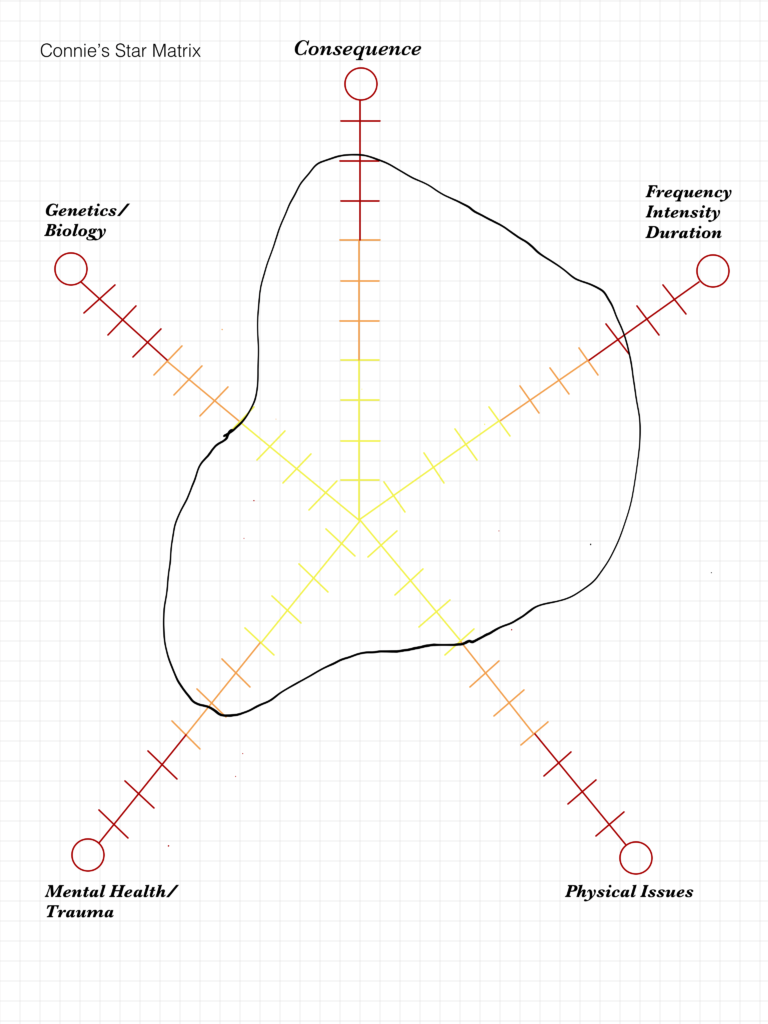
Joe is a 28-year-old heroin addict. He began using at 17 and has been in and out of rehabs ever since. He is from an upper middle class family who has tried to help him in the only ways they knew how….by sending him to more rehab.The Intensive was his 13th rehab experience. He had an uncle who had died of alcohol when he was young so his parents were very concerned and worried about him following down the same path. When he was young his parents were very involved in his life. He was bullied in elementary school but as he headed into high school he hit a growth spurt and became the star quarterback for his high school team. He was popular. He started drinking at age 15 just as his friends did. They all drank to excess. College recruiters were scouting him. He thought he was on top of the world…. Until the accident. He was drinking one night and drive off an embankment and broke his back. He was in acute pain for a long time. He was bedridden for months. The doctors put him on OxyContin in the hospital. It not only relieved his physical pain but his emotional pain as well. He would never be able to play football again but with the pain medication that did seem to bother him so much. When he returned to school people cared but not like they used to. There was a new star quarterback that seemed like he might end up going pro he was good. Joe started feeling excluded. The only time he felt any relief is when he took the pain pills and so he started taking two instead of one. This escalated and the next thing he knew he was going to multiple doctors and getting more and more of the pain pills. As life would have it the doctors started suspecting and said no more pain pills. He panicked and stole a prescription pad and wrote his own. He was arrested on his first attempt to pass a forged prescription. That was his first treatment experience. It was at a local adolescent unit. There he learned about heroin. It was cheap and easy to find. The first day of his discharge he found a dealer and began buying heroin. By the next week he was using IV. He OD and ha to be “Nar canned” back to life on 10 different occasions over the next eleven years. He came to the Intensive after a relapse where he had almost gotten 9 months clean. He was treatment wise when he came into the Intensive and knew what treatment professions wanted him to say. It took a long time to get to the truth with him as he was very defended. His plan began with the idea that since he started using so young, he could not accept he was addict. He had attended NA on a regular basis and had “worked the steps” but felt they did not help him. He believed his problem was strictly because of the physical – the injury he sustained in the automobile accident. As we were able to look closer he could see that before the accident he was drinking more than his friends. His family history was stronger on genetics than he realized, speaking directly with his mother and father he discovered “family secrets” around other members who had died young to substance use. He found meditation helped him with quieting his mind which helped him make better choices. He also discovered that due to the accident his maturation process was interrupted. Instead of a self-help group he joined a men’s group that required accountability and role modeled for him how a grown man should interact in the world. He continued with therapy and found healthy ways of having fun and enjoying life. He recently married and is doing well.
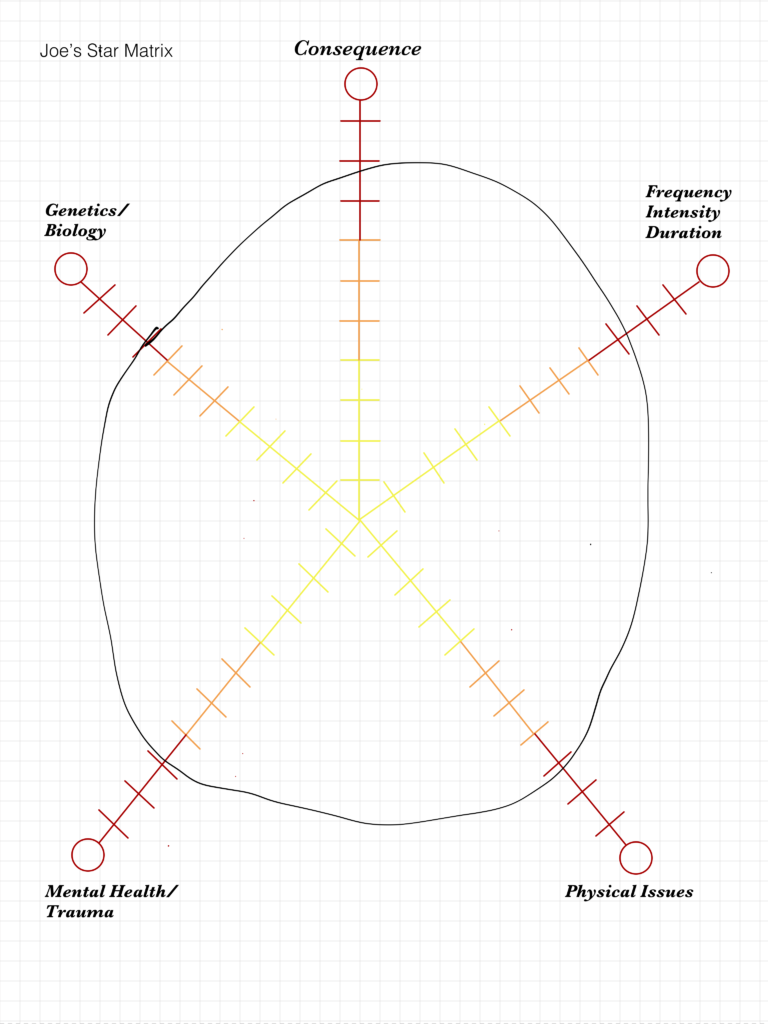
Barry has been drinking a significant amount of alcohol for many years. He has lost jobs, relationships, has had some arrests for DUI and Public Intoxication as well health issues related to alcohol. When he tries to quit he has withdrawal symptoms and returns to drinking even after extended periods of abstinence. Barry was raised by his single mother who “drank too much.” He never met his father as his father had “Lots of anger issues when he drank.” Barry is 51 years old and reported that he started “getting high” when he was 15 years old and used “lots of drugs” throughout his college years. He always drank but rarely to excess until he stopped using other drugs after his marriage and began a career that required drug testing. His alcohol consumption and associated problems have steadily increased for the last 25 years. Barry is an alcoholic.
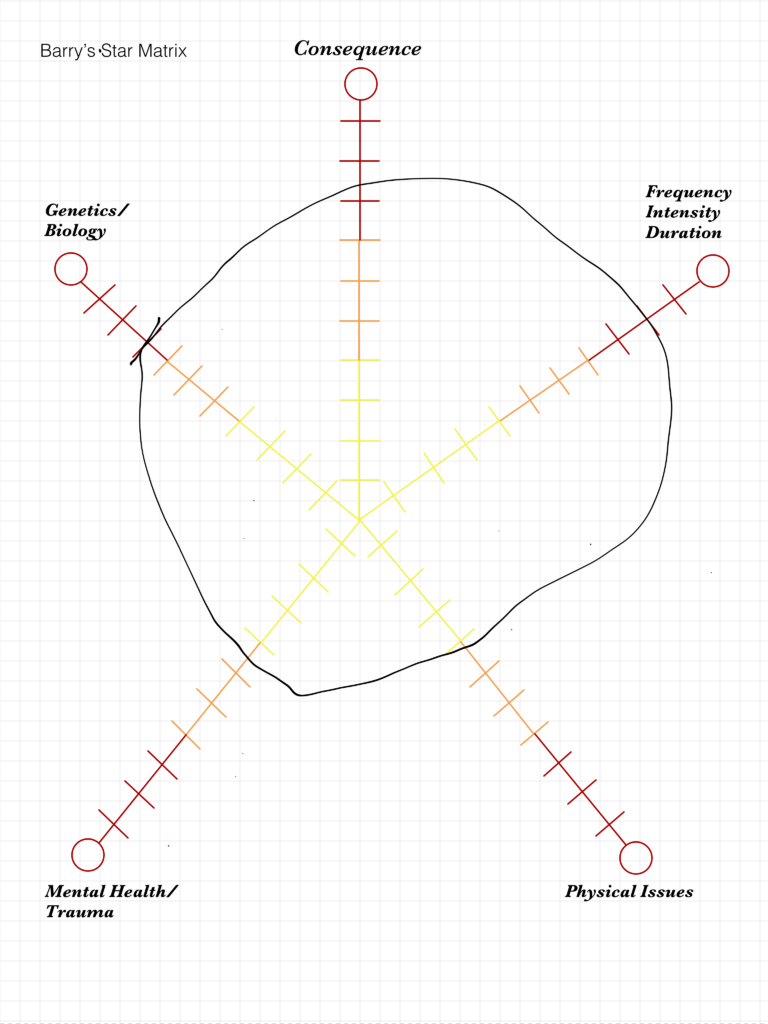
Sam has been drinking a significant amount of alcohol daily for many years. He has had significant consequences including job loss and two arrests. His marriage is on the verge of ending. When he tries to stop drinking he has withdrawal symptoms and has always returned to drinking. Sam is 52 years old and reported he drank occasionally and socially until shortly after his 16-year-old daughter’s death in a motor vehicle accident. He now recalls his mother died in a motor vehicle accident when he was 16 years old. Sam is an alcoholic.
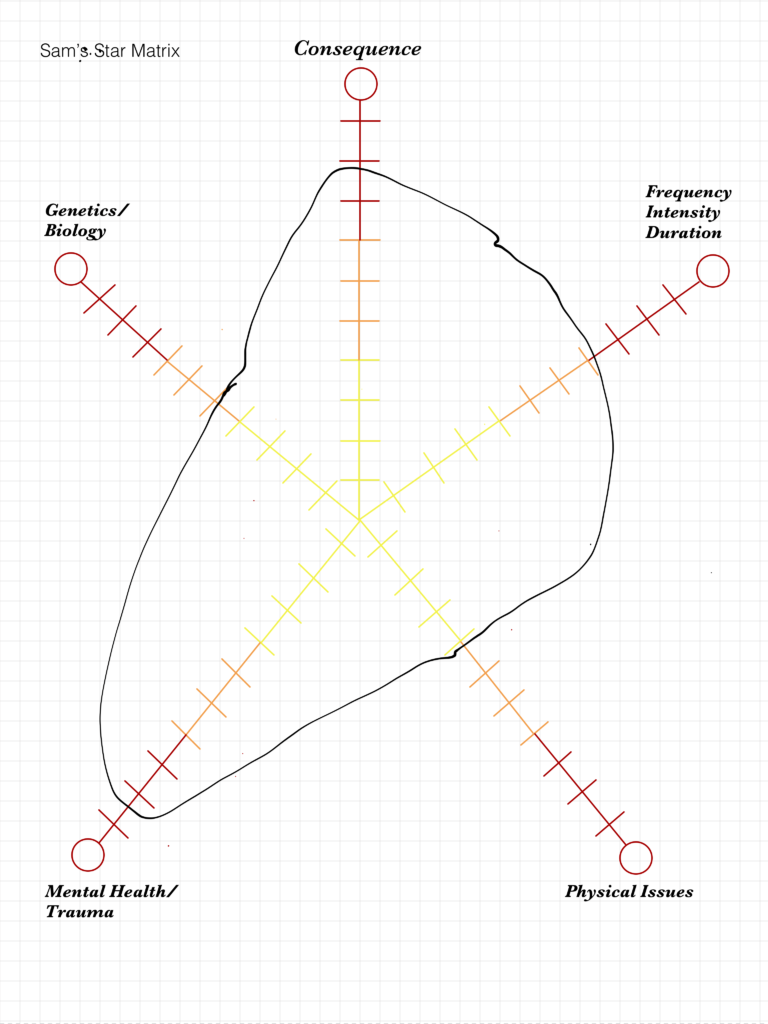
All of these people have a substance use disorder that is most commonly called alcoholism; drug addiction. They all have presenting symptoms and problems that are similar. But they are not the same. The answer to the “why” question is different. The Star Matrix© Assessment System is able to determine the difference and therefore begin a recovery process that is individual for each of these persons. Through the research done the Addiction Research Foundation we have been able to offer the Multi Modal Recovery Process© to their Intensive program and therefore offer them all a better chance at a recovery process that works for each of them.
